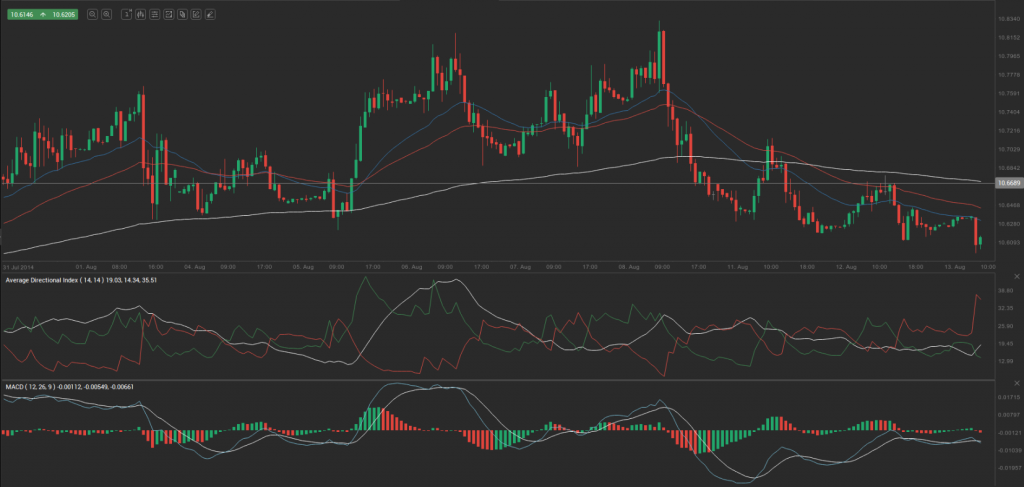Yesterday’s trade saw USD/ZAR within the range of 10.6146-10.6793. The pair closed at 10.6313, gaining 0.02% on a daily basis.
At 7:13 GMT today USD/ZAR was down 0.18% for the day to trade at 10.6116. The pair broke the first key daily support level and touched a daily low at 10.6015 at 6:45 GMT.
Fundamental view
United States
Retail sales in the United States probably increased 0.3% in July on a monthly basis, according to the median forecast by experts. In June sales rose 0.2%. The report on retail sales reflects the dollar value of merchandise sold within the retail trade by taking a sampling of companies, operating in the sector of selling physical end products to consumers. The retail sales report encompasses both fixed point-of-sale businesses and non-store retailers, such as mail catalogs and vending machines. US Census Bureau, which is a part of the Department of Commerce surveys about 5 000 companies of all sizes, from huge retailers such as Wal-Mart to independent small family firms.
US core retail sales (retail sales ex autos) probably rose 0.4% in July compared to a month ago, following another 0.4% increase in June. This indicator removes large ticket prices and historical seasonality of automobile sales.
The retail sales index is considered as a coincident indicator, thus, it reflects the current state of the economy. It is also considered a pre-inflationary indicator, which investors can use in order to reassess the probability of an interest rate hike or cut by the Federal Reserve Bank. In addition, this indicator provides key information regarding consumer spending trends. Consumer expenditures, on the other hand, account for almost two-thirds of nation’s total Gross Domestic Product. Therefore, a larger than expected increase in sales would heighten the appeal of the US dollar. The official report is due out at 12:30 GMT.
South Africa
Annualized retail sales in South Africa probably rose at a pace of 2.0% in June, according to market expectations, following a 2.4% gain in the prior month. The retail sales index provides key information in regard to consumer spending trend in a shorter term.
Statistics South Africa conducts a monthly survey of the retail trade industry, encompassing retail enterprises. This survey is based on a sample, drawn from the 2004 Business Sample Frame (BSF), which includes businesses registered for value-added tax (VAT) and income tax. Retail trade sales include value added tax (VAT).
In case sales rose more than anticipated, this would have a bullish effect on the rand. The official data is expected to be released at 11:00 GMT.
Technical view
According to Binary Tribune’s daily analysis, the central pivot point for the pair is at 10.6417. In case USD/ZAR manages to breach the first resistance level at 10.6689, it will probably continue up to test 10.7064. In case the second key resistance is broken, the pair will probably attempt to advance to 10.7336.
If USD/ZAR manages to breach the first key support at 10.6042, it will probably continue to slide and test 10.5770. With this second key support broken, the movement to the downside will probably continue to 10.5395.
The mid-Pivot levels for today are as follows: M1 – 10.5583, M2 – 10.5906, M3 – 10.6230, M4 – 10.6553, M5 – 10.6877, M6 – 10.7200.
In weekly terms, the central pivot point is at 10.7059. The three key resistance levels are as follows: R1 – 10.7873, R2 – 10.9142, R3 – 10.9956. The three key support levels are: S1 – 10.5790, S2 – 10.4976, S3 – 10.3707.






